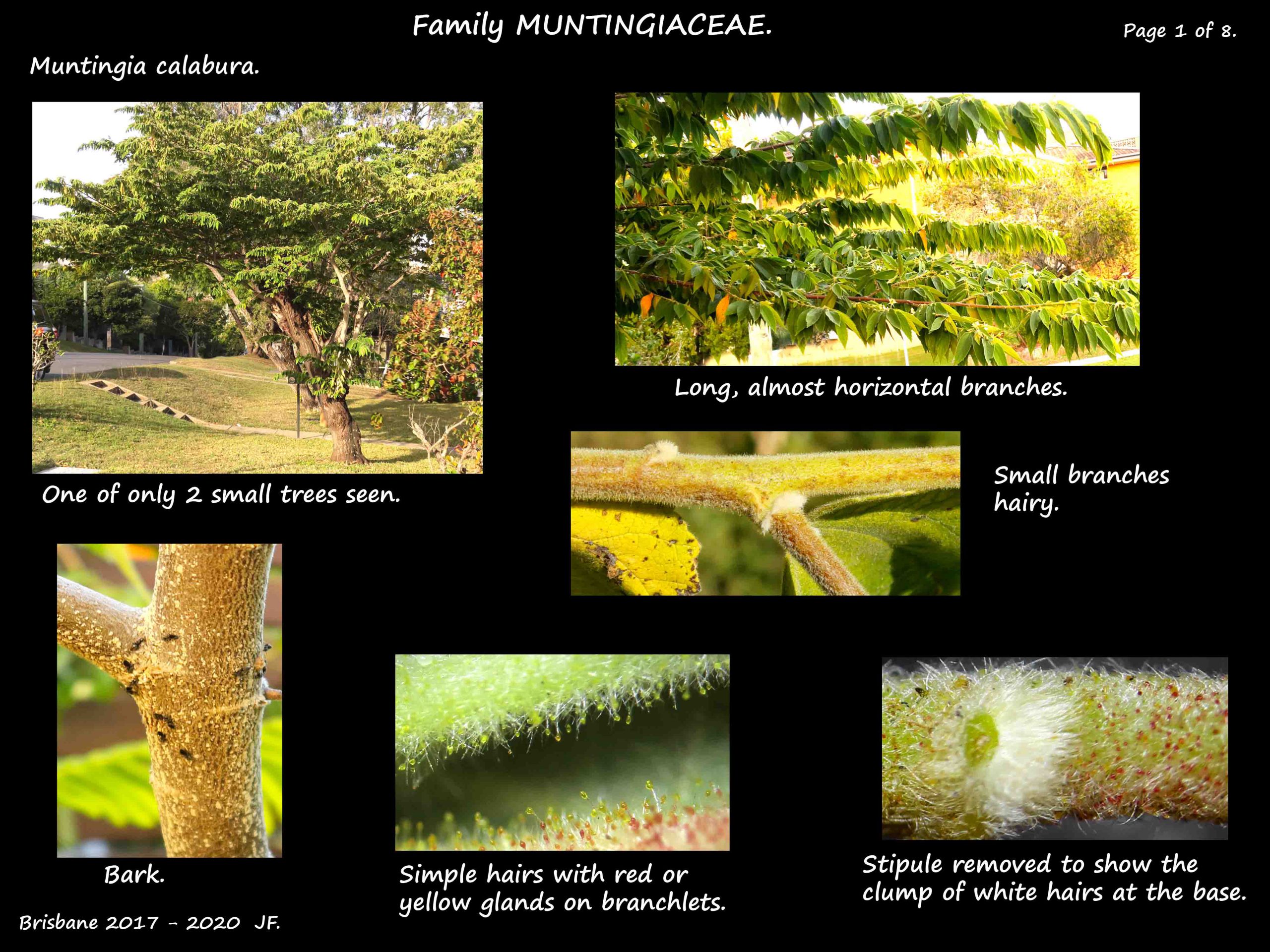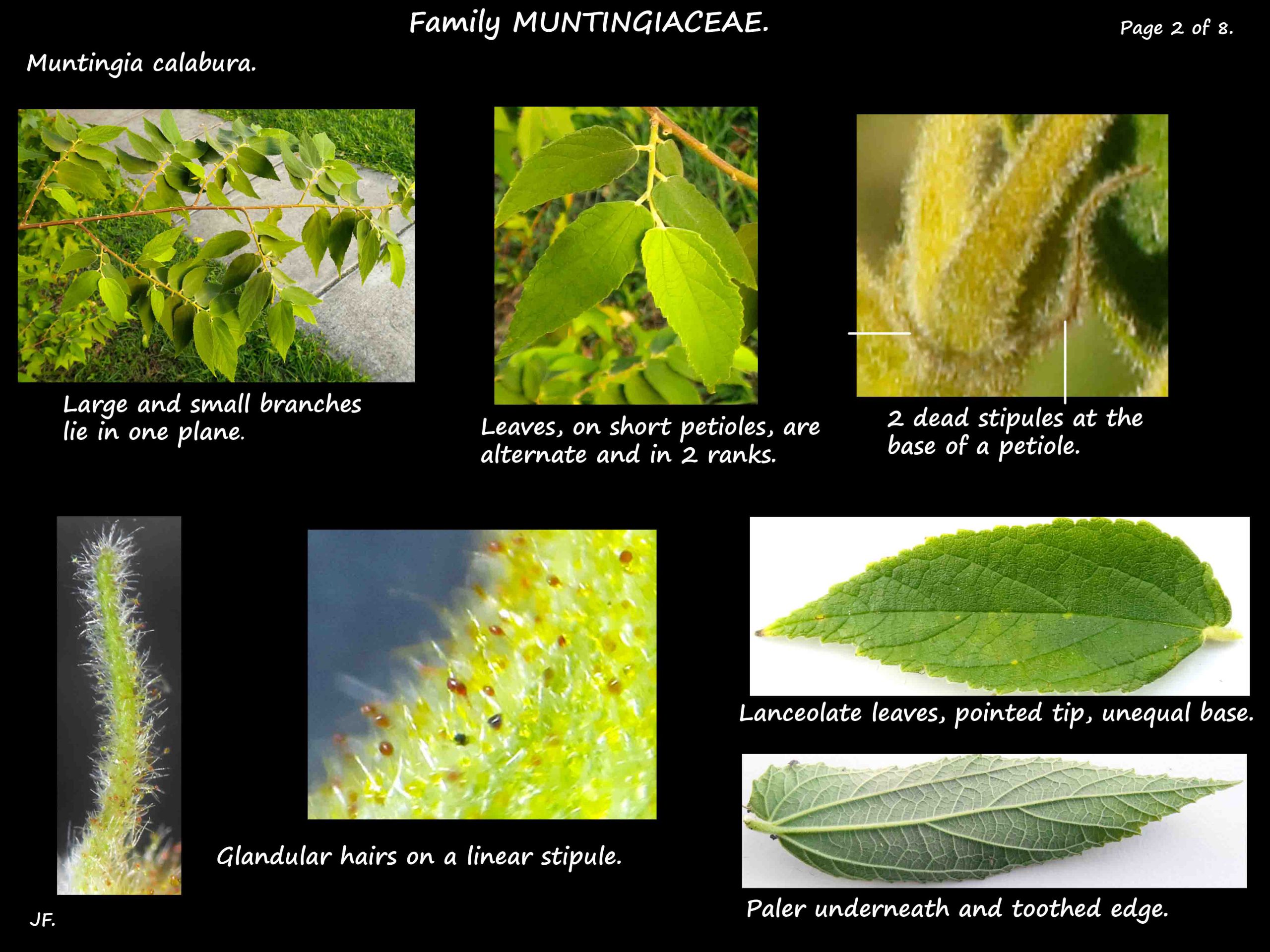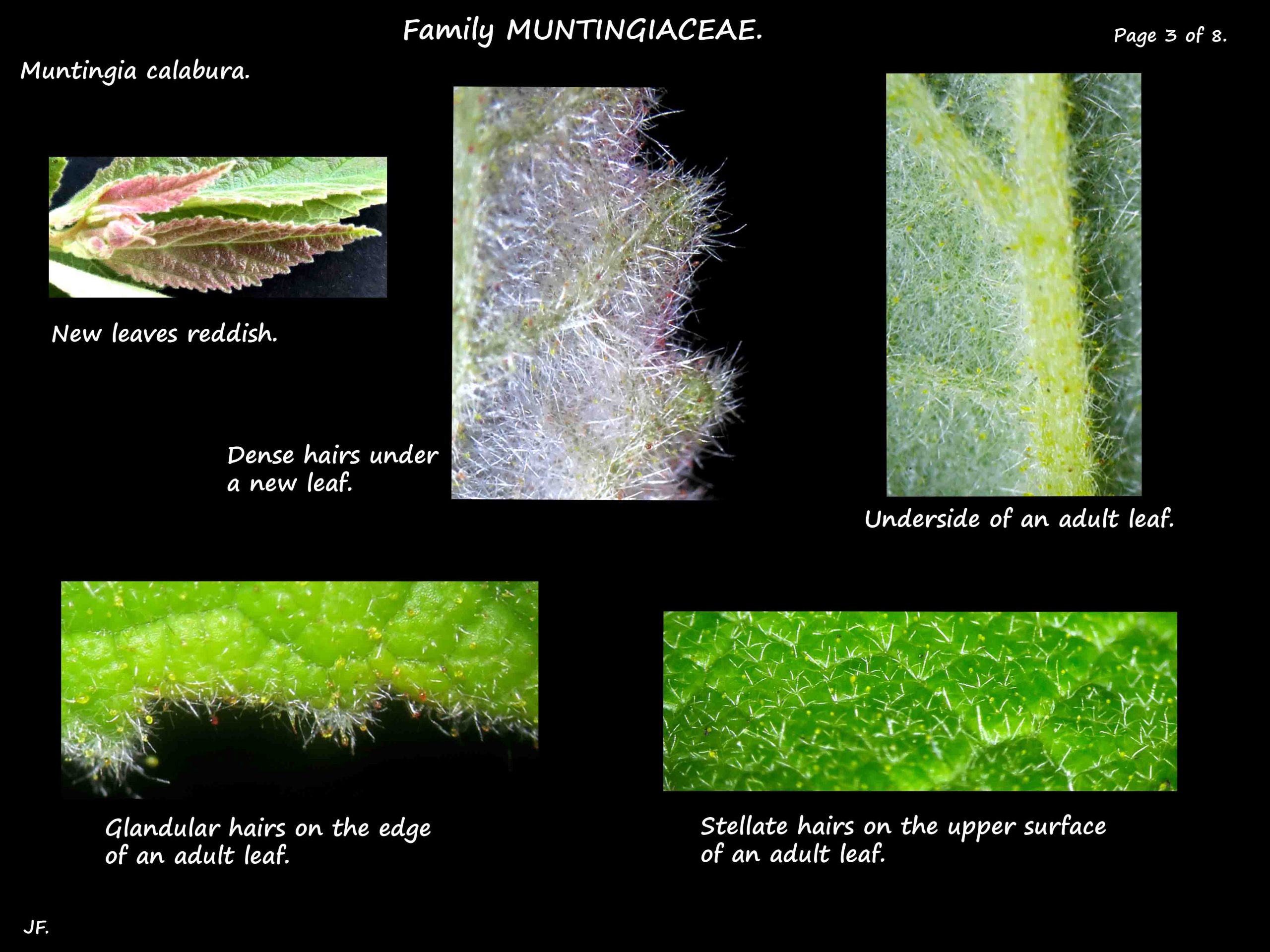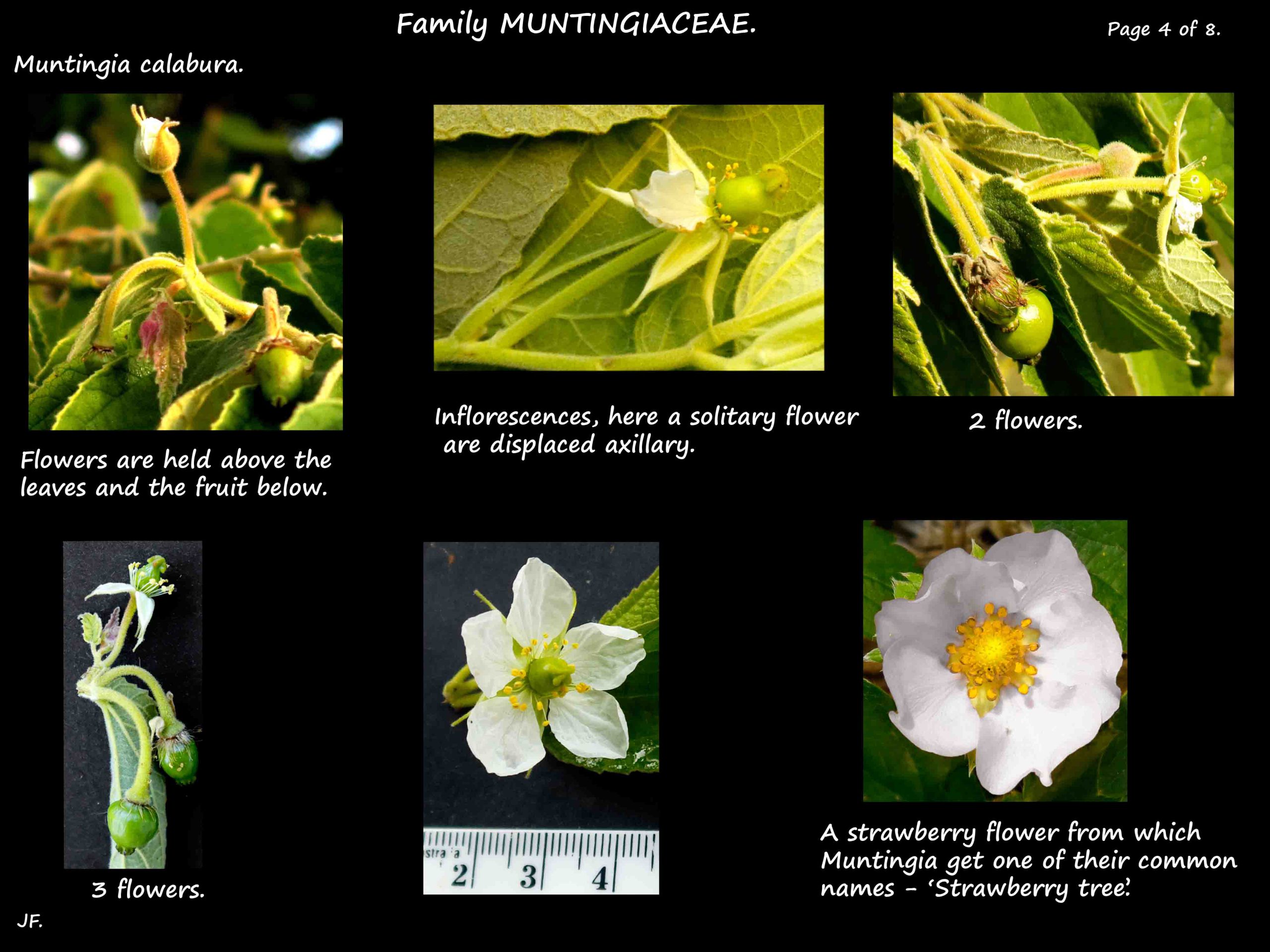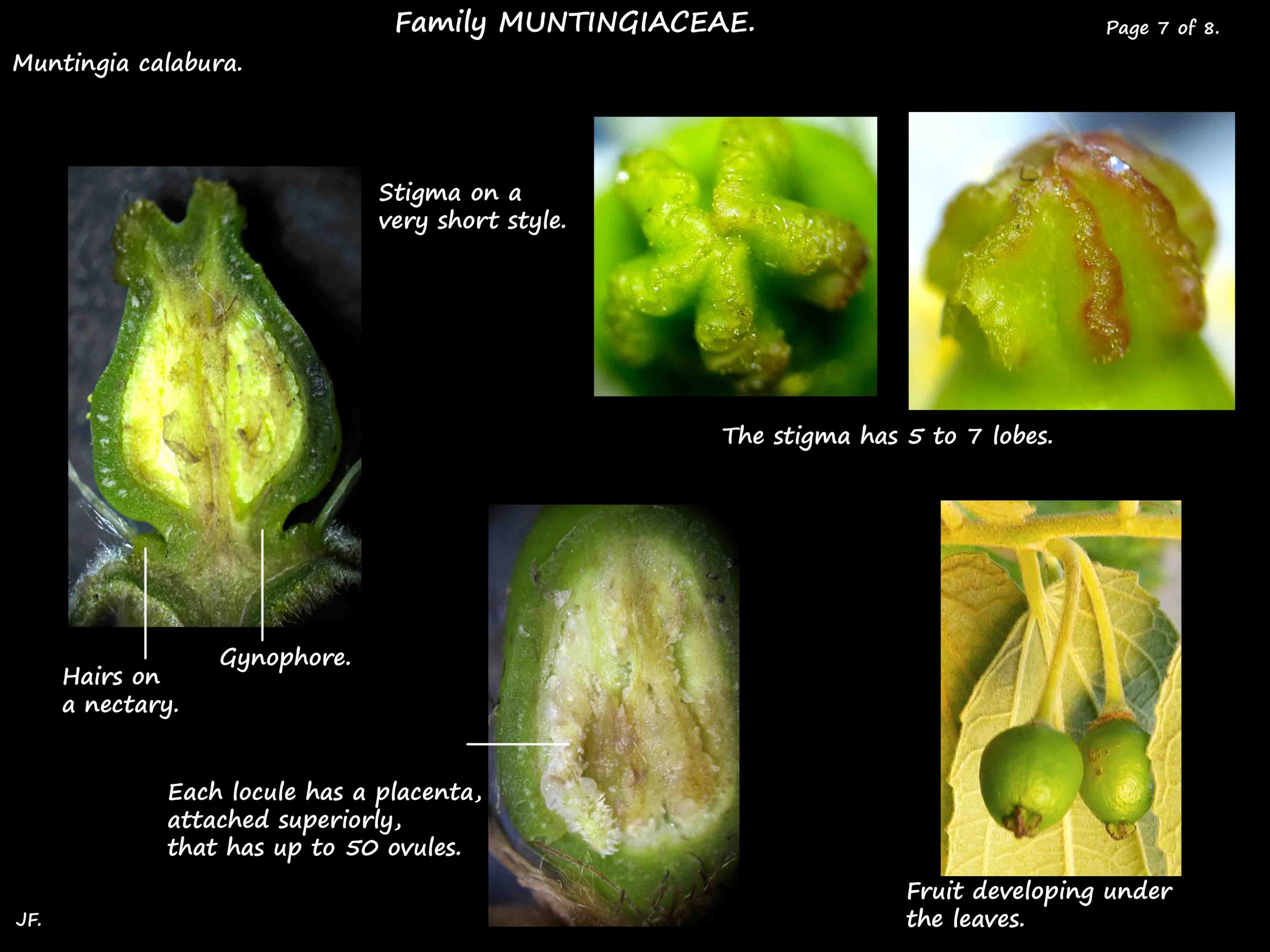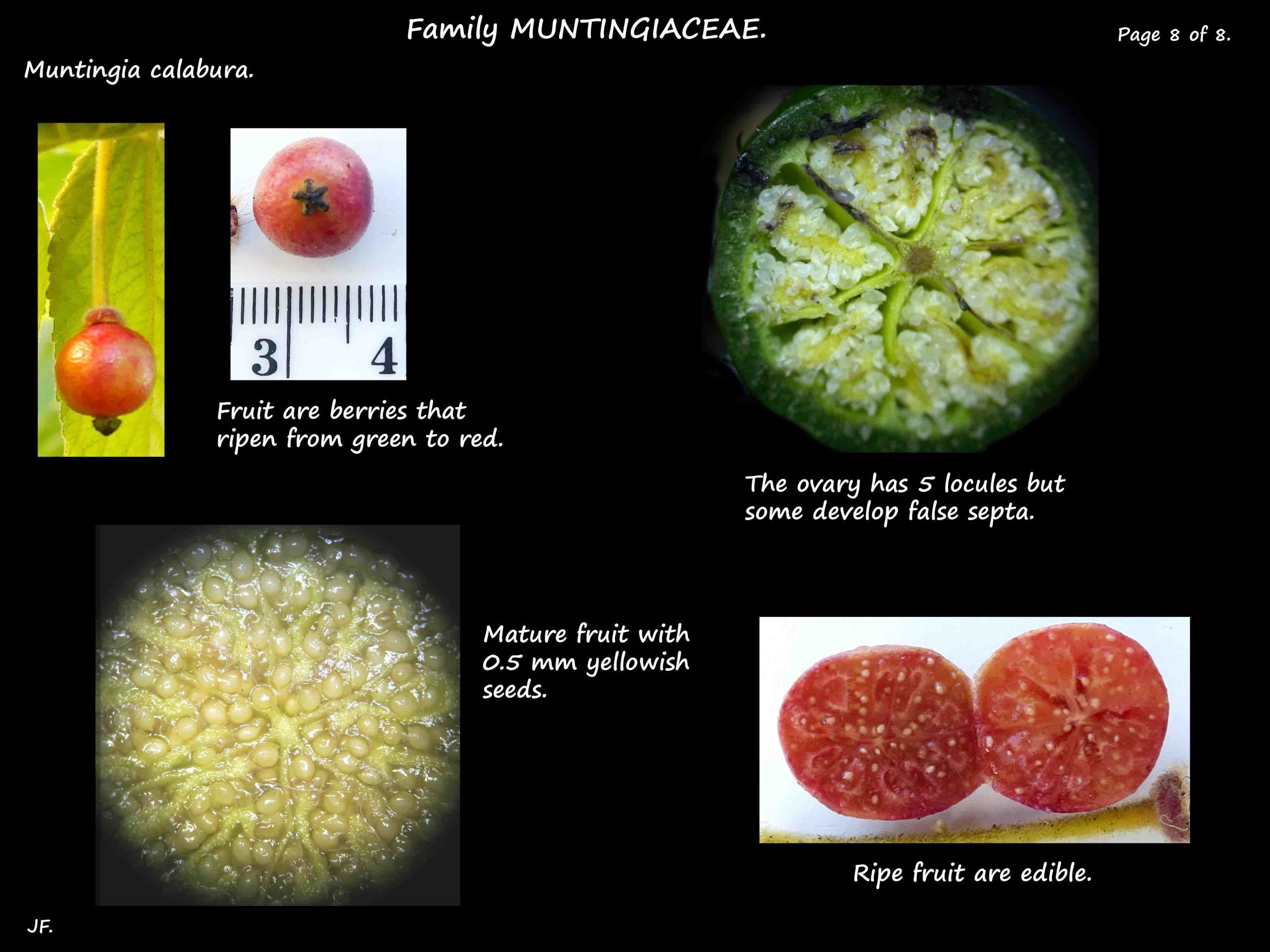Muntingia calabura.
The Strawberry tree is the only species in the Muntingia genus in Family Muntingiaceae.
It is grown in some places for its edible fruit and here as an ornamental.
They are small, fast growing trees, up to 12 m high, with long, nearly horizontal branches.
Many parts, including small branches, leaves and stipules, have dense hairs.
The simple leaves are alternately arranged in 2 ranks, (distichous).
There are 2 hairy, linear stipules about 5 mm long.
On short petioles, leaves are up to 15 cm long and 6 cm wide.
They are lanceolate or oblong with a pointed tip and a very asymmetric base.
The edges are toothed and there are hairs on both surfaces.
Hairs are simple, stellate or glandular.
Inflorescences, of 1, 2 or 3 flowers, are displaced axillary.
Trees flower almost continuously but each flower only lasts 1 day when the petals fall.
The bisexual flowers are said resemble those of strawberries.
Flowers are on pedicels that initially hold the flower upright above the leaves.
After pollination (by bees) it elongates to 2 or 3 cms and bends down so the fruit are below the leaves.
Flowers are up to 3 cm across with parts in 5’s.
There are mostly 5 green, hairy, lanceolate sepals but there can be 6 or 7.
The 5 obovate, white petals are about 12 mm long and alternate with the sepals.
The petals are wrinkled.
There are up to 100 stamens on thin, 6 mm long filaments.
The yellow anthers open via longitudinal slits.
The nectaries, with long hairs on them, form a ring at the base of the ovary.
The smooth, superior ovary is on a short stalk (gynophore).
The 5 locules in the ovary are divided by false septa.
The style is very short and the large stigma has 5 to 7 lobes or ridges.
In each locule the placenta, attached superiorly, has up to 50 ovules.
The fruit are roughly spherical berries up to 1.5 cm across.
They mature from green to red (or yellowish) and the stigma persists.
The skin is soft and the tiny yellowish seeds are in a juicy pulp.
Trees almost always have a lot of fruit on them.
J.F.
